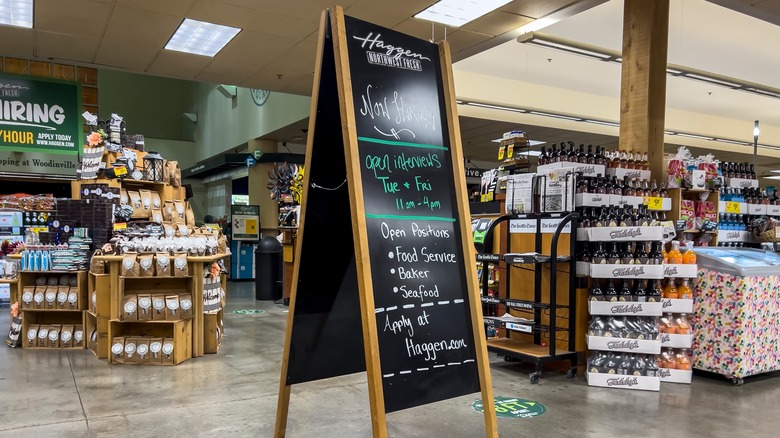How Washington's Haggen Grocery Chain Flourished After The Great Depression
Haggen Food & Pharmacy is a chain of grocery supermarkets that prides itself on high-quality and premium services. It's been around since 1933 (the lowest point of the Great Depression, per History) and has survived up until today. However, in 2015, the original group behind the brand filed for bankruptcy (via Orange County Register). Haggen had expanded too far, too fast into a far-away market, then paid the price. However, according to Oregon Live, Albertsons bought nearly 30 of Haggen's remaining stores come 2016 and still keeps the Haggen name alive, even now. There are still 15 Haggen locations in Washington, its home state.
Its buildings contain floral sections, pharmacies, service counters, and a myriad of other departments. These markets offer all sorts of fresh food, from baked goods, cheese, and fruits to meat, seafood, and veggies. The delis found there also prepare items like salads and sandwiches, so they're ready to grab and go. The business even tries to source products locally, be sustainable, and offer healthier and greener options to customers. Plus, several of their sites host a Starbucks. A one-stop shop!
While it's certainly gone through some changes in the 21st century, Haggen has stuck around for close to a century now. Before the turn of the millennium, the company had a slow-and-steady success story, one that began in the midst of America's worst financial crisis. How did Haggen manage to do so well for so long?
Haggen's full-service model
Four years into the depression, the Haggen family opened Economy Food Store, according to Reference for Business. After a few years of initial success, they relocated and renamed it the White House Market. The word "economy" in the first name certainly hints at affordable prices, while the second's slogan, "You may never be president but someday we'll see you in the White House," points to hopeful patriotism. But another aspect of the business was what set it apart from competitors.
As WWII began (via History), the grocery store added onsite baking, setting up its destiny as a trailblazer in the industry. Sometime after the second Great War ended, Haggen inc. incorporated. From there, the business expanded — slowly — twice in the '60s. The company constructed buildings from the ground up, brick by brick, taking the time to build the business right.
The '70s, '80s, and '90s saw the Haggen chain take off as it passed into the hands of a new generation. More locations were added, and the brand helped pioneer the idea of a superstore. The company added new departments, created warehouse stores, and had 24-hour locations to cater to its customers. This allowed Haggen to venture beyond Washington and into Oregon.
By 2000, a corporate leader from outside the family was running the show. Now, Haggen was looking at providing consumers with an e-shop. From humble beginnings, the company had transformed into something much bigger and more modern. The rest is history.

